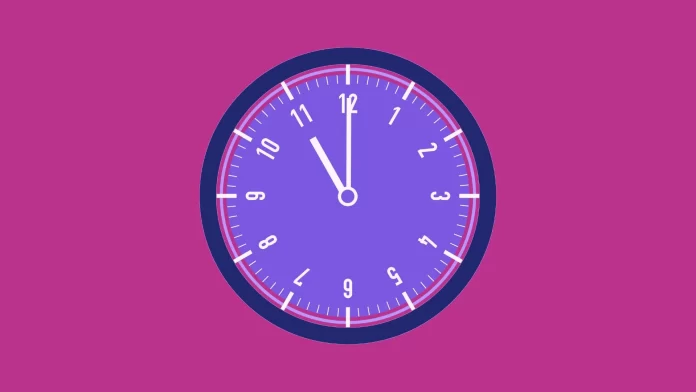Let’s talk about time.
For those out of the loop, most folks in the US and, heck, even around the world live by two clocks: one for the summer, one for the winter.
So, what’s the big idea behind this clock juggling? Well, it ain’t just for kicks. Way back, during the First World War, some bright minds in Germany thought, “Hey, let’s use more daylight and save some fuel for the war.” So, they pushed the clock an hour ahead in 1916. The US followed this practice in 1918. Fast forward to 1966, and the US made it all official-like with the Uniform Time Act.
But hold on, it ain’t just an American gig. Countries all over have their own take on Daylight Saving Time (DST). Some even said, “Nah, we’re good,” and stuck to standard time all year. Yeah, looking at you, Iceland, and parts of Arizona.
Now, why’s everyone and their grandma talking about this? Simple. Some folks say messing with the clock messes with you: your health, your sleep, all that jazz. Others reckon it’s a win-win for businesses because people are out and about when it’s still light out.
And get this, it ain’t just talk. Bills are floating around, both state and federal, to maybe, just maybe, make DST a forever thing. So, the “What time is it?” question could get much less complicated.
Why should you care? Because time’s got its fingers in every pie, from your morning alarm to your bedtime. And if we’re gonna switch to one clock for good, best know what you’re signing up for.
What Is Daylight Saving Time?
Daylight Saving Time (sometimes called summer time or “daylight savings time”) is the practice of setting the clock forward by one hour during the warmer months to extend evening daylight. Originating as a way to save energy during World War I, it’s now observed by many countries, albeit with varying start and end dates. At the same time, the majority of US states participate in DST, with exceptions like Arizona and Hawaii opt-out. The practice has sparked ongoing debate over its impact on health, energy consumption, and the economy.
Spring Forward, Fall Back
“Spring forward, fall back” is the mnemonic used to remember how Daylight Saving Time works in the United States. On the second Sunday in March, clocks are set forward by one hour at 2:00 a.m. local time, effectively making it 3:00 a.m. This “spring forward” results in one less hour of sleep but provides an extra hour of daylight in the evening.
Conversely, on the first Sunday in November, clocks are set back one hour at 2:00 a.m., reverting to 1:00 a.m., giving people an extra hour of sleep but reducing evening daylight. These time changes can disrupt sleep patterns and circadian rhythms, leading to a temporary increase in accidents and health issues in the weeks following the adjustment.
The History of Daylight Saving Time
The First World War
The idea of Daylight Saving Time (DST) predates modern implementation by several decades. George Vernon Hudson, a New Zealand scientist specializing in entomology, first floated the concept in 1895. Yet, it wasn’t until World War I that the practice gained widespread acceptance. Germany led the charge in 1916, with the United Kingdom and the United States following suit in 1918. The core aim was straightforward: maximize evening daylight to curtail the consumption of artificial light, thereby conserving fuel vital for the war.
Standardizing Time
In the US, the Uniform Time Act of 1966 served to codify the practice of DST, bringing order to what had been a patchwork approach. The legislation delineated the specific start and end dates for DST, offering states the option to abstain but not to adopt it year-round without federal consent. Subsequent amendments have been made to the act, the most notable being the energy.
The Evolution of DST Globally
Internationally, the adoption of DST has been varied. While European countries have largely embraced the practice, several have recently debated its utility. Russia, for instance, abandoned DST in 2011, citing negative health impacts. Ukraine abandoned the time change in 2011, but that never had an impact, a month after the Ukrainian parliament voted to re-install the clock change. In November 2011, the government once again adopted the permanent time, and at the end of January 2012, the government returned to the time change. In March 2013, the parliament declined the government regulation for the permanent time. And since then, the legislation to install the permanent time in Ukraine hasn’t passed the parliament. Conversely, some Middle Eastern countries never adopted DST, primarily because the length of their days doesn’t vary significantly throughout the year.
The Push for Change: Modern Debates and Legislation
In recent years, the conversation around DST has reignited, both in the United States and globally. Numerous studies have questioned the actual energy savings and pointed to potential health risks. This renewed scrutiny has led to legislative efforts to either abolish or make DST permanent. Several states have passed laws to adopt year-round DST in the US, pending federal approval. On the global stage, the European Union conducted a survey in 2018, where a majority of citizens voted to abolish the biannual clock change, although no action has been taken yet.
The history of Daylight Saving Time is a tapestry of good intentions, new factors like health issues, and ongoing debate. And the question remains: Is the practice still relevant, or is it time for a change?
The Pros, The Cons
Health Benefits and Risks
Let’s start with the good stuff. Advocates for DST argue that extended daylight in the evening encourages outdoor activities like jogging, cycling, or even just a leisurely stroll. This increase in physical activity is a boon for public health, potentially reducing obesity rates and associated health risks like diabetes and high blood pressure. Moreover, some studies suggest that well-lit evenings can deter criminal activities, making neighborhoods safer.
But hold on, it’s not all sunshine and roses. The downside is that the biannual clock shifts, known as circadian rhythms, can wreak havoc on our internal body clocks. This disruption can lead to poor sleep quality, which in turn can elevate the risk of heart issues, strokes, and even mental health problems like depression and anxiety.
You can read about the pros and cons of DST here.
Economic Impacts: Spending and Savings
On the money front, DST seems like a good deal. More daylight means more time for folks to hit the shops or dine out. That’s a boost for local businesses and, by extension, the economy. Tourism gets a leg up, too; more daylight equals more sightseeing.
But critics aren’t buying it. They say this spending spree is more of a flash in the pan than a sustainable boost. And the energy savings, once a cornerstone argument for DST, now seem a bit overstated.
Additionally, while the original intent of DST was to save energy, modern studies show that any energy saved from reduced lighting is often offset by increased use of heating and cooling systems, not to mention the extra gasoline consumed by people enjoying their extended evenings out.
Road Safety: Light vs Dark
Here’s an angle you might not have considered: road safety. More daylight should mean fewer accidents, right? Well, it’s complicated. While better visibility can reduce mishaps, the initial switch’s sleep loss can cause more fender benders.
In a nutshell, DST is a mixed bag. There are compelling points on both sides of the aisle, and as the debate rages on, it’s crucial to scrutinize these factors closely.
The Present State of Things
The push for permanent Daylight Saving Time is gaining steam within the US and on the global stage. In the American legislative arena, bipartisan support is growing for bills like the Sunshine Protection Act, signaling a broader shift in public and political will. While the majority of US states still engage in the biannual clock-switching ritual, exceptions like Arizona, which observes Mountain Standard Time year-round, and Hawaii, sticking to Hawaii-Aleutian Standard Time, stand out as outliers.
Public sentiment is increasingly leaning toward a single, year-round time. Recent polls indicate that most Americans are tired of the clock-changing exercise, a sentiment amplified by social media campaigns and grassroots movements. The corporate world is also joining the fray, with sectors like tech, tourism, and retail advocating for permanent DST, eyeing potential benefits such as increased consumer activity and improved employee well-being.
Internationally, the debate is far from settled. The European Union conducted a large-scale survey in 2018, with the majority voting to end the biannual time changes. However, decisive action remains elusive, leaving EU member states in a state of uncertainty.
The current state of affairs is a complex mix of evolving public opinion, active legislative efforts, and corporate advocacy, all set against an international backdrop of ongoing debate.
The Laws and Actions
States That Have Passed Legislation
Let’s zoom in on the states that have decided to take matters into their own hands. Florida was among the first to make headlines with its “Sunshine Protection Act” in 2018. The law aimed to make DST permanent, capitalizing on the state’s tourism industry and the general preference for extended daylight hours. But Florida isn’t alone in this endeavor.
Oregon and Washington followed suit, passing similar legislation with the idea that synchronized time changes, or lack thereof, would benefit the entire Pacific Northwest region. In the heartland, states like Tennessee and Arkansas have also jumped on the bandwagon, citing public health and safety as key motivators.
Over in New England, Maine, and Massachusetts are exploring the possibility of adopting year-round DST and shifting to the Atlantic Time Zone. This would effectively give them an extra hour of daylight in the evening; a move proponents say could boost both mental well-being and the economy.
These state-level initiatives are not yet in effect. They’re essentially in a holding pattern, pending federal approval. Each state has its own set of reasons for wanting to make the switch, whether it’s economic benefits, public health, or a combination of factors. But until the federal government gives the go-ahead, these laws remain symbolic gestures of growing discontent with the current system.
The Role of Federal Law
When it comes to Daylight Saving Time, federal law plays a pivotal role in shaping the landscape. Currently, the Uniform Time Act of 1966 serves as the cornerstone legislation governing DST in the United States. This act allows states to opt out of DST but restricts them from adopting it year-round without federal approval. This creates a complex dynamic where states can pass their own laws favoring permanent DST, but these laws remain in a sort of legislative purgatory until Congress gives the nod.
In recent years, federal interest has seen a noticeable uptick in revisiting this issue. Bills like the Sunshine Protection Act have been introduced in Congress, gaining bipartisan support. These legislative efforts aim to either make DST permanent nationwide or give states the autonomy to decide without federal interference. The bills have undergone multiple reading committee reviews and are subject to intense lobbying from various interest groups, ranging from public health organizations to business associations.
Moreover, the federal government is also responsible for coordinating with international bodies, especially when it comes to synchronizing time changes with neighboring countries like Canada and Mexico. This adds another layer of complexity to the issue, as any change in federal law could have ripple effects on international relations and trade.
In essence, federal law serves as both a facilitator and a gatekeeper in the ongoing debate over Daylight Saving Time. It sets the parameters within which states can operate, but it also holds the key to any sweeping changes that could bring an end to the biannual clock adjustments. As public sentiment shifts and new research emerges, the role of federal law becomes increasingly critical in determining the future of timekeeping in the United States and beyond.
What is Proposed?
Today, the push for permanent Daylight Saving Time is more robust than ever, thanks in part to a renewed sense of urgency from both sides of the political aisle. Congress is currently considering legislation like the Sunshine Protection Act, which aims to make DST the new norm across the US. This isn’t just a political talking point; it’s backed by a diverse coalition that includes tech giants, retail conglomerates, and public health organizations. These groups argue that extended daylight hours could increase consumer spending, reduce energy consumption, and even lower crime rates. On the flip side, a growing body of research questions the health benefits of such a change, pointing to potential increases in heart attacks and sleep disorders. Public sentiment is also a significant factor. Recent surveys show that a majority of Americans are tired of the clock-changing ritual and would prefer a single, year-round time. However, the path to permanent DST is fraught with legal complexities. Federal law, as it stands, allows states to opt out of DST but requires Congressional approval for a state to adopt it year-round. This has led to a complicated landscape of state-level laws, each awaiting federal green-lighting. As the debate rages on, the stakes are high, and the implications are far-reaching, affecting everything from international trade relations to the daily routines of millions of Americans.
US Tried to Switch to Permanent Daylight Saving Time in 70’s, It Failed
In the 1970s, the US took a bold step by switching to year-round Daylight Saving Time, spurred by an energy crisis and the desire to conserve fuel. The experiment kicked off on January 6, 1974, plunging morning commutes into darkness and causing public uproar. Parents were concerned about their children going to school in pitch-black conditions, leading some kids to carry flashlights for safety. While the Department of Transportation predicted long-term benefits, such as reduced stress during evening commutes, the reality proved different. Accidents involving children spiked, with eight fatalities in Florida alone, prompting the state’s governor to call for a repeal. Public approval for the change plummeted from 79% to 42% in just three months. By late September, Congress passed a bill to revert to standard time, signed into law by President Ford on October 5, 1974. The experiment was deemed a failure, highlighting the complexities and unintended consequences of tampering with time.
The Dark Hour
One of the most significant drawbacks of permanent Daylight Saving Time is the issue of darker mornings during winter months. This is particularly concerning for children who have to commute to school in dim light or even complete darkness. The safety risks are evident, from increased chances of accidents to the vulnerability of walking in poorly lit areas.
However, there’s a counter-argument that offers a practical solution: shifting school start times by one hour later. By doing so, children would still travel to school in daylight, effectively neutralizing the risk posed by darker mornings. This isn’t just a theoretical proposition; some school districts have already experimented with later start times and found positive outcomes, including improved academic performance and better mental health among students.
The government could also step in to encourage companies to adjust their working hours. By pushing the standard 9-to-5 workday to a 10-to-6 schedule, for example, employees would commute in safer, well-lit conditions. This adjustment would not only mitigate the risks associated with darker mornings but also align with the natural circadian rhythms of most adults, potentially boosting productivity and overall well-being.
Adjusting school and work schedules rather than changing the clocks for the entire country offers a more targeted approach to addressing the challenges of permanent Daylight Saving Time. By shifting these specific schedules, we can directly mitigate the risks for the groups most affected, school children and working adults, without disrupting the broader population. This strategy offers the advantage of adaptability, enabling schools and businesses to customize their hours to suit their local communities or specific sectors better. Plus, it sidesteps the health pitfalls linked to the twice-yearly clock adjustments, such as disrupted sleep cycles and a spike in cardiovascular issues. Essentially, this approach delivers a tailored solution that can be adjusted as circumstances require, rather than imposing a blanket change that affects the entire population; benefits be damned.
While the darker mornings of permanent DST pose a legitimate concern, they’re not an insurmountable obstacle. With thoughtful adjustments to school and work schedules, the impact on those most affected could be minimized, making the transition to year-round Daylight Saving Time a more palatable option.
What’s About the Rest of the World?
The conversation about permanent Daylight Saving Time is far from a US-centric issue; it’s a global debate with varying degrees of adoption and resistance across continents. In Europe, the European Union has been grappling with this issue for years. Despite this, the EU has been slow to act, leaving countries like Germany, France, and the UK uncertain and leading some nations to consider unilateral changes.
Russia and Turkey serve as example tales. Both countries introduced the permanent time.
In Asia, the situation is even more diverse. Countries like Japan and India have completely opted out of DST, citing reasons that range from energy consumption patterns to cultural and religious practices. With its vast expanse, China has also shunned DST and operates in a single time zone despite its wide geographical spread.
The Southern Hemisphere presents its own set of challenges. Australia, for example, is divided on the issue, with some states observing DST and others not. New Zealand has been more consistent in its adoption. Still, it faces unique issues due to its geographical location, such as extremely late sunsets in some regions if year-round DST were implemented.
In Africa, the majority of countries do not observe DST, often due to their equatorial location, which offers relatively consistent daylight hours year-round. However, some North African countries like Morocco and Egypt have dabbled in DST but have not made it permanent.
The global perspective on DST is a mosaic of conflicting policies, cultural attitudes, and scientific research. Any move toward permanent Daylight Saving Time would require a multi-faceted approach that considers not just domestic implications but also international trade, diplomacy, and public health on a global scale.
Public Opinion
When it comes to Daylight Saving Time, folks have opinions and are not shy about them. In the US, recent polls are showing most people are done with the clock-changing game. It ain’t just about missing an hour of sleep; it’s the whole mess of having to rejig your daily life. Social media plays a big part, too. Twitter and Facebook? They’re like the town squares for the anti-DST brigade, making it tough for politicians just to brush it off.
Over in Europe, it’s kind of the same story. A survey by the EU in 2018 showed a solid 80% of folks want to stop the clock-switching madness. That’s not a number you can just sweep under the rug. EU bigwigs are feeling the heat, even if they haven’t made any big moves yet.
But hey, let’s not forget the rest of the world. It’s a mixed bag out there. Russia and Turkey gave permanent DST a shot and still make some fuss in public opinion. Then you’ve got countries like Japan and India, where DST never even got off the ground. No interest, no chatter, nada.
So what’s the big takeaway? People’s feelings about DST? It’s not just an American thing or a European thing. It’s global. And as the debate keeps on keeping on, you better believe that the voice of the people is gonna weigh heavy in how this all plays out.
The Stakeholders
When it comes to the Daylight Saving Time debate, the stakes are high, and the players are diverse. Let’s break it down:
- General Public
The average Joe and Jane are fed up with the clock-changing ritual. Polls show a majority in the US and Europe favor sticking to one time year-round. It’s not just about convenience but the tangible disruptions to daily life and health.
- Business Sector
Retailers and tech companies are generally on board with permanent DST. More daylight in the evenings means more shopping and more time spent online. It’s a win-win for their bottom line.
- Medical Community
Doctors and health experts are sounding the alarm. They’re concerned about the potential health risks of permanent DST, from disrupted sleep patterns to increased risk of heart issues. Their voice is loud, and it’s backed by research.
- Educational Institutions
Schools are in a tricky spot. On one hand, darker mornings could pose safety risks for kids. On the other hand, research suggests that later school start times could benefit students’ academic performance and well-being.
- Government Bodies
There’s momentum to make DST permanent at the federal level, especially in the US, but not all states are on board, and some have even passed legislation to opt out. The EU is still mulling it over in Europe, caught between public opinion and bureaucratic red tape.
What’s Up Next?
So, where does all this chatter and debate leave us? The wheels are in motion, especially in the US, where the “Sunshine Protection Act” is gaining traction in Congress. This isn’t just a piece of paper; it’s got the backing of diverse stakeholders, from tech behemoths to retail giants. But let’s not forget, there’s a flip side. Medical experts are raising red flags about potential health risks, and they’re not whispering; they’re shouting.
In Europe, the situation’s a bit stickier. EU leaders are dragging their feet despite overwhelming public support to end clock changes. It’s a classic case of public will versus political inertia. And given the EU’s knack for lengthy deliberations, don’t expect a quick resolution.
Globally, it’s anyone’s guess. Some countries are watching and waiting, ready to follow the lead of the US or EU. Others, like Russia and Turkey, are already there. They’re unlikely to jump back into the DST fray anytime soon.
So, what’s the bottom line? The push for permanent Daylight Saving Time is at a tipping point. It’s a complex issue in scientific research, public opinion, and political maneuvering. But one thing’s for sure: the clock’s ticking, and change, one way or another, is coming.






